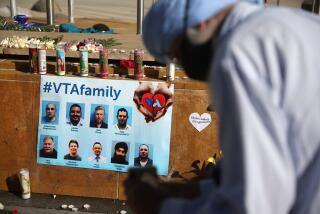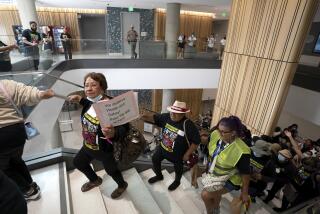U.S. Guidelines Target Workplace Violence
- Share via
WASHINGTON — The Labor Department issued guidelines Thursday designed to reduce homicides and other workplace violence against health-care and social-service workers.
In California, similar guidelines to curb such violence were adopted in 1993, and a subsequent state law imposes additional safety requirements on hospitals.
Federal officials said the health-care and social-service industries were targeted because roughly two-thirds of the reported incidents of workplace violence occur in those fields. In Los Angeles, the issue was dramatized in 1993 when a disgruntled patient at County-USC Medical Center went on a rampage, shooting three emergency room doctors and holding two other employees hostage for five hours.
In a separate incident of on-the-job violence that spurred the California regulations, psychiatric social worker Robbyn Panich was stabbed to death in Santa Monica in 1989 by a mentally ill patient.
“It is a sad fact of life that workers who are dedicated to saving lives too often find their own lives endangered,” Labor Secretary Robert Reich told reporters at a briefing.
“Health-care and social-service workers often face aggressive patients, visit clients’ homes in dangerous neighborhoods, encounter violent situations in hospital emergency rooms or face other dangerous situations.”
Reich said guidelines will be developed for other industries, including night retailing.
Among OSHA’s suggestions:
* Install metal detectors.
* Install alarm systems or panic buttons.
* Use bright and effective lighting systems.
* Use curved mirrors at hallway intersections or concealed areas.
* Provide two exits and arrange furniture to prevent entrapment.
Copies of the guidelines may be obtained by mailing a self-addressed label to OSHA Publications, P.O. Box 37535, Washington, DC 20013-7535.
The guidelines are also available on the Internet at https://www.osha.gov
More to Read
Sign up for Essential California
The most important California stories and recommendations in your inbox every morning.
You may occasionally receive promotional content from the Los Angeles Times.










